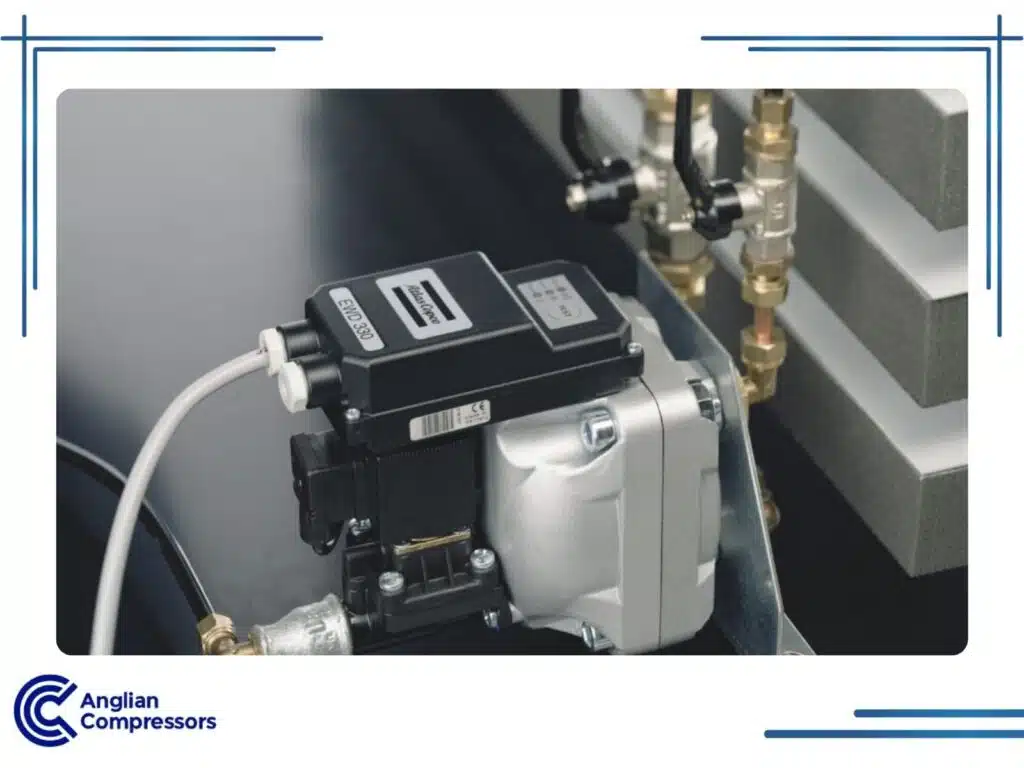How to avoid microorganisms in compressed air?
Compressed air is essential across industries, from pharmaceuticals to food production. Yet, contamination by microorganisms—tiny living organisms—poses a serious threat. These invisible intruders can wreak havoc, spoiling products, damaging equipment, and even jeopardising health. The result? Costly recalls, tarnished reputations, and potential legal issues.
Several factors contribute to this contamination. Think of it like an unwelcome houseguest: poor air intake quality and certain environmental conditions invite microorganisms in and make them comfortable. High humidity, warm temperatures, and stagnant air create the perfect breeding ground for these unwanted visitors.
So, how can we avoid microorganisms in compressed air? The short answer is through clean, safe, and proactive measures. By understanding the factors that promote microorganism growth and implementing the right strategies, companies can safeguard their operations and ensure the quality of their products.
Understanding Microorganism Growth in Compressor Installations
Microorganisms like bacteria, fungi, moulds, and yeasts need specific conditions, such as moisture and appropriate temperatures, to grow and reproduce. Unfortunately for us, compressed air systems can often provide these ideal conditions.
These microorganisms contaminate products, damage equipment, and pose health risks for packaging and food for both consumers and workers.
Studies indicate that even seemingly clean ambient air contains up to 140 million microorganisms per cubic metre, which can proliferate under favourable conditions in a compressed air system.
To avoid microbial contamination, temperature and moisture levels must be continually monitored. This way, you can detect potential problems before they become significant issues.
Strategies to Inhibit Microorganism Growth in Compressed Air Systems
There are several ways to inhibit microorganism growth in compressed air systems. The first base is to start with a new compressor, especially if you are using a much older system. Newer compressors are more cost-efficient and powerful and require less maintenance to combat microorganisms. For instance, Atlas Copco compressors include advanced filtration and drying technologies to meet stringent air purity requirements.
- Controlling Moisture & Temperature
With moisture and warm temperature being the ideal environment for these microorganisms, start by controlling the specific relative humidity, moisture and temperature within your compressed air systems.
This can be achieved by using air dryers and aftercoolers, which reduce the moisture content, differential pressure and temperature of the compressed air.
Maintaining a dew point of -40°C or lower is often required in critical industries such as pharmaceuticals and electronics.
- Using air dryers and aftercoolers
Air dryers and aftercoolers are commonly used to remove moisture from compressed air. An aftercooler cools the compressed air, causing the moisture to condense and separate from the air. The condensed moisture can then be removed from the system.
Air dryers further reduce the moisture content of the compressed air by using various technologies such as refrigeration, desiccant, and membrane.
Refrigeration dryers typically achieve dew points around +3°C, which is suitable for general industrial applications, while desiccant dryers reach dew points as low as -70°C for sensitive environments.
Different drying technologies are suitable for specific applications, and selecting the appropriate temperature heat drying technology for your needs is crucial. For example, refrigeration dryers are effective in applications with high ambient temperatures, while desiccant dryers are suitable for applications that require extremely dry compressed air.
- Effective Filtration for Compressed Air Quality
Filtration is another essential strategy to inhibit microorganism growth. It involves using filters to remove contaminants from the compressed air, including microorganisms, dust, and oil.
Importance of multiple filters
Multiple filters are usually required to achieve the desired level of compressed air purity. The filters are typically arranged in a sequence, each removing a specific type of contaminant.
Final-stage HEPA or ULPA filters can remove particles as small as 0.01 microns for critical applications.
A pre-filter can remove large particles and oil, while a coalescing filter can remove smaller particles and water droplets. Start with a broad filter and work toward a 0.3 micro HEPA filter.
Maintaining and replacing filters regularly
It’s essential to regularly change the system’s filters to ensure they continually function at 100%. Over time the filters become clogged with contaminants, so replacing them often is vital.
Changing the filters every 2000 hours of usage is recommended, but it is advised to check what the manufacturer states. Advanced filter monitoring systems can alert operators when a filter requires replacement.
- Regular Testing of Compressed Air
Regular testing of compressed air is necessary to monitor the quality of the compressed air and detect any microorganisms present.
Testing for bacteria, mould, and fungi
Testing for bacteria, fungi, and viruses involves taking air samples from different locations in the compressed air system and analysing them for the presence of microorganisms. Samples can be taken using specialised sampler plates that catch any contaminations and allow you to run tests to identify if anything unwanted is present.
Consulting with compressed air testing experts for suitable testing methods
To conduct the testing, you will need an expert to analyse the samples within a lab. These experts can take two types of samples, active and passive. They will be able to guide you on the best process to take and put a plan in place for you moving forward.
Partnering with ISO 8573-certified labs ensures compliance with industry standards for air purity.
- Addressing Compressed Air Leaks
Compressed air leaks not only waste energy, but the compression process can also provide entry points for potential contaminants. Therefore addressing these atmospheric air leaks early is imperative.
Identifying and fixing leaks
You must conduct regular leak detection surveys to identify and fix leaks. The most common way to detect leaks is by using an ultrasonic acoustic detector which recognises high-frequency hissing, caused by the leak.
Modern monitoring systems can also use real-time sensors to pinpoint leaks and log data for maintenance teams.
You can buy these for around £40 online or in local construction stores, but of course, we’d suggest having an Anglian engineer visit your site and conduct this test for you.
- Optimising the Compressor Environment
In addition to controlling airflow, moisture and ambient temperature, optimising the compressor environment can inhibit and prevent microorganism growth.
Placing compressors in cool, dry locations
Placing compressors in cool, dry locations can help prevent the growth of microorganisms. High temperatures and relative humidity in a humid environment can promote the development of microorganisms, so placing compressors in well-ventilated and cool areas can reduce these conditions.
Minimising conditions that favour microorganism growth
Minimising conditions that favour microorganism growth in the compressor environment is also essential. This includes ensuring proper ventilation and cleaning the compressor regularly.
Additionally, any spills or leaks should be cleaned up promptly to prevent the growth of microorganisms.
Ensuring Accurate Testing: Aseptic Techniques
While the strategies discussed earlier focus on preventing microbial growth within the compressed air system, accurate testing is essential to verify the effectiveness of these measures and detect any potential contamination. This is where aseptic techniques come into play.
Aseptic technique is a set of specialised procedures designed to maintain the integrity of compressed air samples during collection and analysis. Unlike the broader strategies above that target the system itself, aseptic techniques focus on preventing external contamination during the testing process.
Key Practices for Aseptic Sampling and Testing
- Sterile Equipment: Use only sterile sampling equipment, such as air sampler plates, tubing, and containers. This prevents the introduction of microbes from the equipment itself.
- Personal Protective Equipment (PPE): Always wear appropriate PPE, including gloves, lab coats or aprons, and face masks, to prevent the transfer of microorganisms from your skin or clothing to the samples or equipment.
- Disinfection: Thoroughly disinfect all surfaces and tools that will come into contact with the samples. This includes workbenches, sampling ports, and any other surfaces where samples will be handled.
- Careful Handling: Handle samples with care, avoiding any unnecessary contact or exposure to the environment. Use sterile swabs, pipettes, and other tools to manipulate samples.
- Controlled Environment: Whenever possible, perform sampling and testing in a clean, dedicated space with minimal air movement to reduce the risk of airborne contamination.
By meticulously following these aseptic practices, you can be confident that your test results accurately reflect the true microbial content of your compressed air system. This information is invaluable for assessing the effectiveness of your contamination prevention strategies and making informed decisions about system maintenance and improvements.

Industry-Specific Compressed Air System Considerations
It’s worth noting that certain industry-specific considerations must be implemented, especially regarding food & beverage companies and the pharmaceutical industry.
You can find the food and beverage compressed air requirements here and the pharmaceutical compressed air requirements here.
If you need a high-quality compressor with low chances of contamination, then Anglian compressors are your best choice.
We have a range of different industrial air compressors to suit your specific needs.
If you need a high-quality compressor with low chances of contamination, then Anglian Compressors are your best choice.
We have a range of different industrial air compressors to suit your specific needs.
Reach out to our experts today for a tailored solution.


